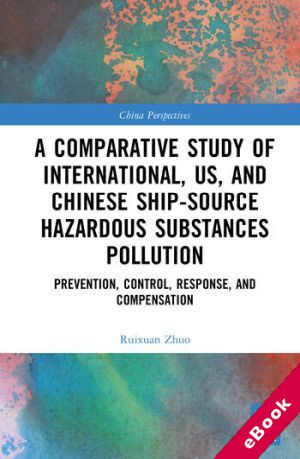
The device(s) you use to access the eBook content must be authorized with an Adobe ID before you download the product otherwise it will fail to register correctly.
For further information see https://www.wildy.com/ebook-formats
Once the order is confirmed an automated e-mail will be sent to you to allow you to download the eBook.
All eBooks are supplied firm sale and cannot be returned. If you believe there is a fault with your eBook then contact us on ebooks@wildy.com and we will help in resolving the issue. This does not affect your statutory rights.
The book systematically discusses how to better regulate and reduce ship-source hazardous substance pollution. It analyzes international, U.S., and Chinese laws and regulations from the perspectives of pollution prevention and control, emergency response and environmental remediation, and liability and compensation for damage.
Through case studies of major ship-source hazardous substance pollution incidents in the U.S. and China, the author concludes that prevention, control, and response measures must be considered alongside conflicts between pollution control objectives and other economic, social, and political constraints. Additionally, prevention, control, and response efforts are constrained by a narrow definition of damage, insufficient liability limits, and underdeveloped insurance and supplementary funding mechanisms, despite the consideration of environmental claims in the compensation regimes. The author calls for adequate legal institutions that include discharge standards and permits, emergency response protocols, strict compensation standards, limited defenses, a supplementary compensation fund, and comprehensive enforcement that integrates national regulations and international cooperation.
This book serves as a useful reference for students, scholars, and legal professionals specializing in shipping, maritime, and environmental law.